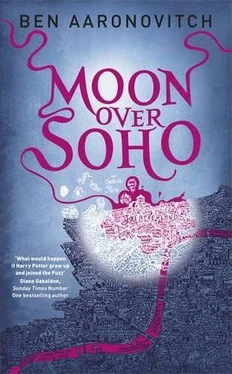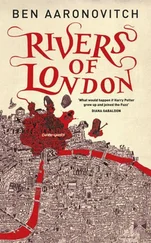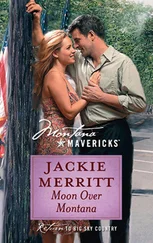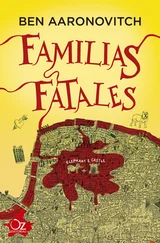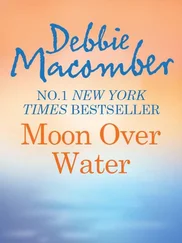“All my lovely jazzmen,” she said. “I was happiest when they were playing, I liked the sex and the company but I was really happiest when they were playing.”
I groaned as the next track on the iPod turned out to be the John Coltrane. Had I put it on shuffle by accident? It’s impossible to slow-dance to his version of “Body and Soul” — for a start he never actually stays with the melody for more than three notes, and after a couple of bars he goes to the wild musical place that only people like my dad can follow. I steered us over to the fridge so I could surreptitiously press the next-track button on the iPod. It was Nina Simone, thank God, a young Nina with a voice that could melt an ice sculpture at a Scottish bankers’ convention.
“What about Lord Grant?” I had to ask.
“The one that got away,” she said. “They said he was going to be an English Clifford Brown but he kept on leaving the scene. Cherie was so cross. You see, she had rather set her cap for him. She claimed once that she’d caught him, but then he got away.” She smiled at the memory. “I rather think I was more his type, and who knows what might have happened except that he had this fearsome wife.”
“How fearsome?”
“Oh, terrifying,” she said. “But you should know, she’s your — ” Simone froze in my arms and frowned up at me but I rocked her back into the dance. In her eyes I could actually see the memory slipping away.
“Did you always love jazz?” I asked.
“Always,” she said.
“Even when you were at school?”
“We had the strangest music mistress at school,” said Simone. “Her name was Miss Patternost. She used to have her favorites around for tea — there she would play us records and encourage us to ‘commune’ with the music.”
“Were you one of her favorites?”
“Of course I was,” she said and slipped her hand inside my shirt again. “I was everybody’s favorite. Am I not your favorite as well?”
“Definitely,” I said. “Were Cherie and Peggy favorites too?”
“Yes, they were,” said Simone. “We used to practically live in Patternost’s room.”
“So you and your sisters all went to the same school?”
“They’re not really my sisters,” she said. “They’re like my sisters, like the sisters I never had. We met at school.”
“What was the name of the school?” If I had the school then I could probably track all three of their identities.
“Cosgrove Hall,” said Simone. “It was just outside Hastings.”
“Nice school?”
“It was perfectly all right, I suppose,” said Simone. “The masters weren’t too beastly to us and it had its own riding stable and Miss Patternost — I mustn’t forget her. She was very taken with Elisabeth Welch. ‘Stormy Weather,’ that was her favorite. She used to make us lie on the carpet — she had a lovely Oriental carpet, from Persia I think — and make pictures in our minds.”
I asked what kind of records and Simone said that it was nearly always jazz, Fletcher Henderson, Duke Ellington, Fats Waller, and of course Billie Holiday. Miss Patternost told the girls that jazz was the Negro’s great contribution to world culture and that as far as she was concerned they could eat as many missionaries as they wanted, as long as they continued to produce such beautiful music. After all, said Miss Patternost, the various societies were churning out hundreds of missionaries every week but there was only one Louis Armstrong.
I knew from my own dad’s collection that some of those disks would have been hard to get on the right side of the pond. When I asked where they came from, Simone told me about Sadie, Miss Patternost’s woman friend.
“Did she have a surname?”
Simone stopped pulling my shirt out of my trousers. “Why do you want to know?” she asked.
“I’m a policeman,” I said. “We’re born curious.”
Simone said that as far as she and any of the other girls knew, Miss Patternost’s friend Sadie was always just called “Sadie.”
“That’s how Miss Patternost used to introduce her,” she said.
It was never divulged what it was Sadie did, but the girls deduced from hints dropped in conversation that she worked in the movies in Hollywood and that she and Miss Patternost had been engaged in a passionate correspondence for over fifteen years. Every month or so, in addition to the almost daily letters, a package would arrive wrapped in brown paper and strong twine and marked HANDLE WITH CARE. These were the precious records on Vocalion, Okeh, and Gennett. Once a year Sadie would arrive, always just before the Easter hols, and ensconce herself in Miss Patternost’s rooms, and there would be much playing of jazz records until the wee small hours of the morning. It was a scandal, said the girls of the lower sixth. But Simone, Peggy, and Cherie didn’t care.
“Crushed beetles,” said Simone suddenly.
“What about them?” I asked. I was wishing I hadn’t blown out my iPhone because the recording app would have come in very handy right now.
“The icing on my birthday cake,” said Simone. It seemed that the big treat on a girl’s birthday at Cosgrove Hall was that you got to choose the color of the icing on your cake. It was a matter of honor that the birthday girl would try to come up with most unlikely color of icing she could think of, violet and orange being popular, with blue spots. The kitchen always managed to provide the color and the girls were convinced that they did it by grinding up beetles as coloring.
Back in the days before E numbers and food technologists, I thought. Which was, as it happened, about where I wanted to be. Luckily the iPod chose that moment to play the last track on the playlist — Ken “Snakehips” Johnson’s very own version of “Body and Soul.” I don’t care what purists like my dad think. If you want to dance you can’t beat a touch of swing. Simone certainly thought so because she stopped trying to strip me and instead started to pull me around the coach house in tight little circles. She was leading but I didn’t mind — that was all part of the plan.
“Did you ever hear him play live,” I asked as casually as I could. “Ken Johnson?”
“Just the once,” said Simone.
In March 1941 of course.
“It was our last day of freedom,” she said. “We’d all joined up as soon as we were old enough.” She told me that Cherie joined the Auxiliary Territorial Service and Peggy was a Wren in the Women’s Royal Naval Service. But Simone had chosen the Women’s Auxiliary Air Force because somebody had said there was a chance she might fly.
“Or at least meet a handsome pilot who’d take me up in his crate,” she said. It was Peggy’s Canadian uncle who got them into the Café de Paris and Cherie had said that they’d be fine, money-wise, providing they didn’t order any food or have more than one drink.
Simone pressed her cheek against my chest and I stroked her hair.
“Our table could have been better, perhaps,” said Simone. “It was surprisingly small and not at all conveniently placed.
“If the band were at six o’clock we were sort of half past one.”
The club was full of handsome Canadian officers, one of whom sent over a bottle of champagne to their table, sparking a spirited discussion about how appropriate it would be for them to accept it, which ended only when Peggy downed her glass in one gulp. This led to another discussion about whether they could get a second bottle out of the Canadians and what, Cherie asked darkly, might they expect in return?
Peggy said that as far as she was concerned, the Canadians could have whatever they liked. In fact she was of the opinion that it was their patriotic duty to make the brave soldiers of Commonwealth welcome and she was perfectly prepared to do her duty and think of England.
Читать дальше
